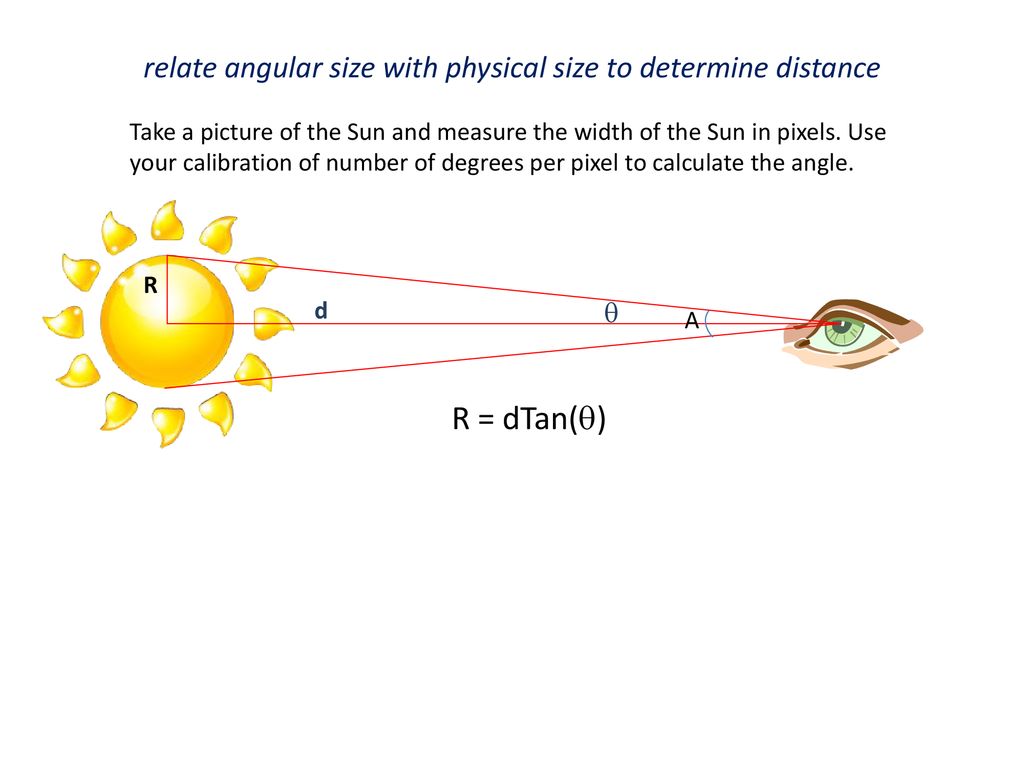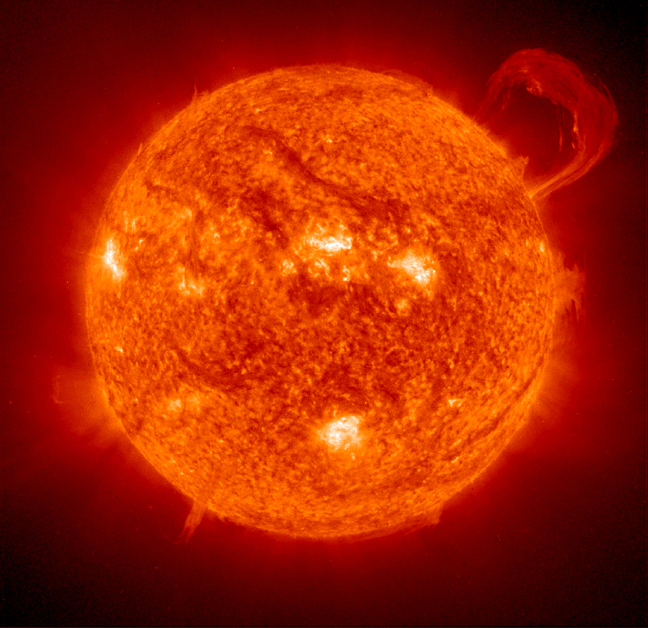Solar Radius
The Solar radius is easy once the Astronomical Unit is known. Because the Sun is so close, we can easily resolve its image. More distant objects would appear very small and, in general, appear to us as point sources of light on the sky (like mathematical points, things with no size). We can measure how large the is because of its proximity. The Sun is roughly 1/2 o across.
 |

|
We first measure the angular size of the Sun and then note that the tangent of a small angle is approximated as tangent Θ ~ Θ so that
-
Tan Θ ~ Θ ~ ( radius of the Sun, R ) / ( astronomical unit, d )
or
radius of the Sun, R ~ d x Θ
In this way we find that the radius of the Sun is 696,000 km.
Finding the radii of other stars is more difficult. We cannot directly measure the angular sizes of stars in the above manner except for the largest most nearby stars using new modern interferometric techniques, such as the Very Large Telescope in Chile (see Betelgeuse (from APOD), and other interferometric techniques known as speckle interferometry and Michelson interferometry. To date, the most useful way of finding the radii of distant stars is to use binary (eclipsing) star systems.
